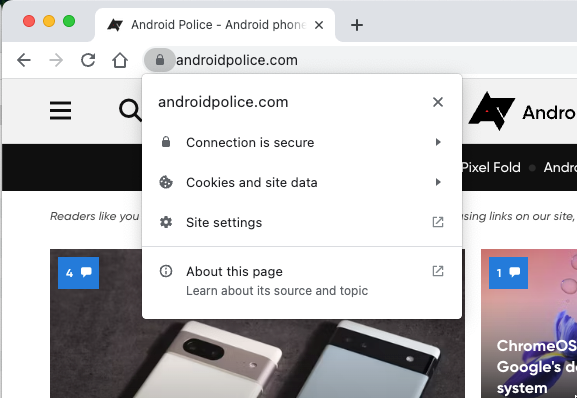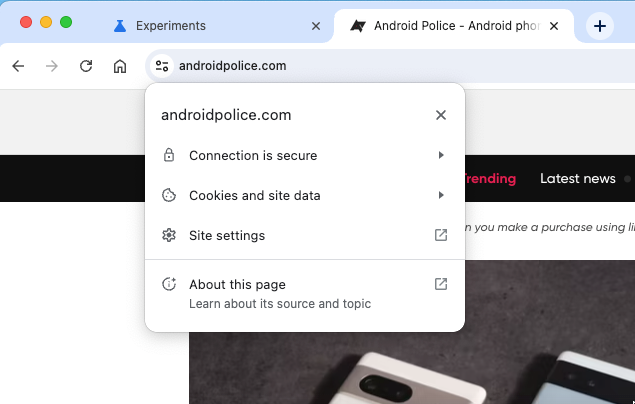Google is preparing a big redesign for Chrome on desktop that brings it more in line with its Material You-themed counterpart on Android. The other big change that Google has announced this week is a fundamental tweak to how browsers work since the 90s, as the company is planning to get rid of the lock icon that has been used to depict secure HTTPS connections since before Chrome even existed, replacing it with a new tune-inspired settings icon.
Google explains the change by saying that by now, HTTPS is the default connection on the internet and doesn’t need a special designation anymore. Instead, the lock icon is usually associated with safeguards that HTTPS can’t even provide. According to research from the company, many people think that the lock icon means that a website can be trusted. Given that many phishing sites use HTTPS, this can lead to a false sense of security. In the Google study, only 11% of participants correctly understood what the lock icon means.
Above: Current lock icon. Below: New toggle icon.
Since the lock icon currently also serves as an entry point for site settings, Google is attempting to kill two birds with one stone with its redesign. The new tune icon, which depicts stylized settings toggles, is more obviously clickable than the lock icon, and is more clearly associated with tweaking controls or options.
At the same time, warnings about insecure HTTP sites aren’t going anyway. Like in current releases, Chrome will stop you from visiting these insecure sites by default, forcing you to click a “Continue to site” button to access them. The prominent “Not Secure” note replacing the lock icon will also be retained after the design refresh.
If you’re curious to see both the new toggle button in the address bar and the general design refresh, install Chrome Canary on your desktop computer and turn on the chrome://flags#chrome-refresh-2023 flag. This will show you the current state of the redesign, though there are still more changes coming until it launches in September as Chrome version 117.

The same redesigned toggle is also coming to Android. On iOS, Google is fully removing the lock, as the icon isn’t tappable on this platform at all.
Google previously tried to get rid of the lock icon in 2018. Back then, HTTPS sites still carried a green lock and a "Secure" tag. That same year, the design was tweaked to the current lock icon-only look we're familiar with today. The company's stated goal was to fully remove the lock eventually, though, which was met with backlash at a time when only about two thirds of websites were secured with HTTPS. In 2021, the company experimented with a downwards-pointing arrow that replaces the lock icon in order to show that it was clickable and would present more options.



